Santa Cruz Chameleon
Originally posted on July 31, 2019 at 0:35 amBy Scott Williams
INTRO
Ripping through singletrack on a singlespeed is where I find my ultimate happy place, but each year, the niche I connect with continues to sink further into the depths of a forgotten past. From a business perspective, I fully get it, but that doesn’t mean I like it.
The weight difference between a full-suspension trail ripper and a comparable hardtail is only a pound or two. Shifty-bit technology is light-years ahead of what it was even five years ago, and things seem to be pretty dialed, at least on the mechanical side. Now, as the time tested HG cassette body finds itself on the proverbial chopping block, some of us wonder how much longer the industry will keep our niche alive.
Santa Cruz, from the hardtail and singlespeed enthusiasts out there, we thank you for the all-new carbon Chameleon.

THE BIKE
Staying true to the original intent behind the Santa Cruz Chameleon, the latest offering maintains the versatility that the aluminum chassis offers but in carbon fiber. A carbon hardtail with modern geometry, sliding dropouts, a threaded bottom bracket, the ability to accommodate 29×2.5 or 27.5×3.0 rubber and a max fork length of 140 mm.
The Chameleon C is available as frame only for $1,600 or with two complete built kits with a Fox Performance fork and SRAM GX Eagle in either 29er or 27plus ranging from $3,800 to $5,700. Most of that upgrade money for the top-tiered kit is going towards the company’s carbon Reserve wheelset laced up to custom-anodized turquoise Hope Pro 4 hubs and a matching Hope headset.
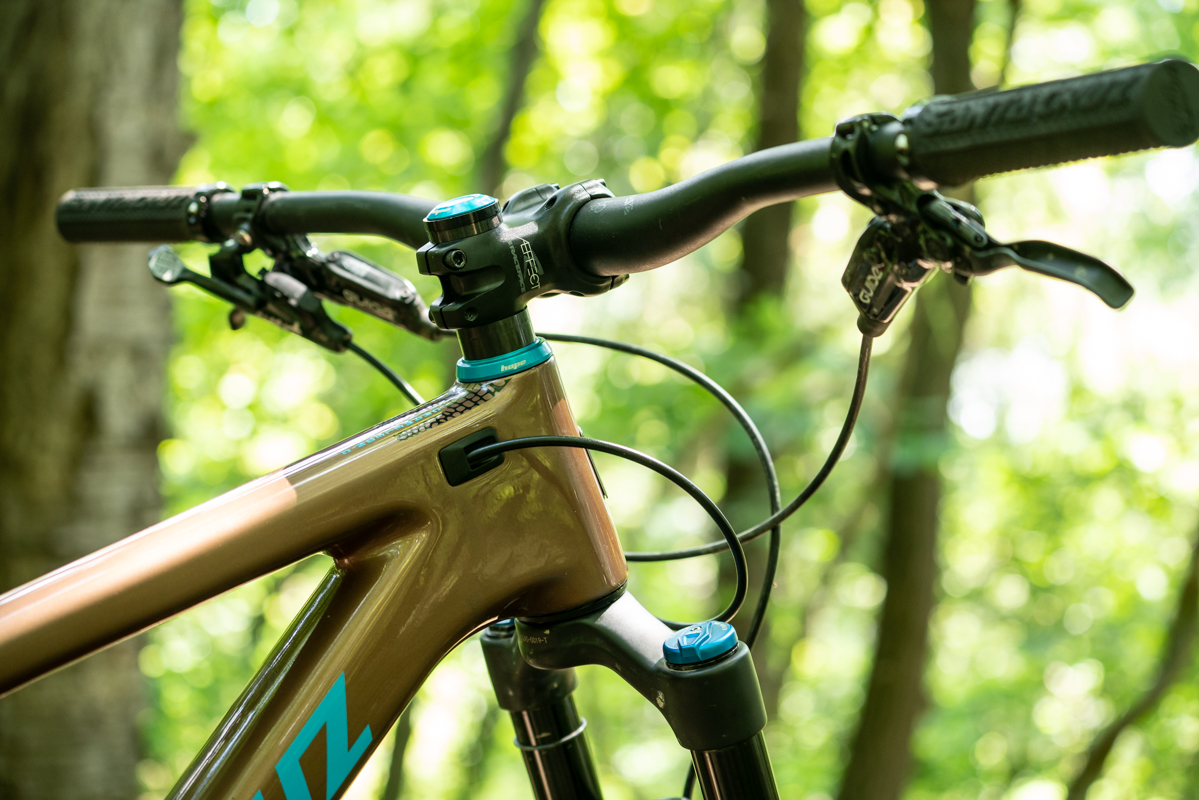
Aside from the Hope headset and hubs, the component spec on the Chameleon C SE+ is not anything out of the ordinary. The Guide R hydraulic brakes deliver stopping power with a bonus turkey gobble to front and rear 180 mm rotors. SRAM rounds out the rest of the drivetrain with GX Eagle with a carbon X1 crank and Reverb Stealth dropper, which all performed exceptionally well.
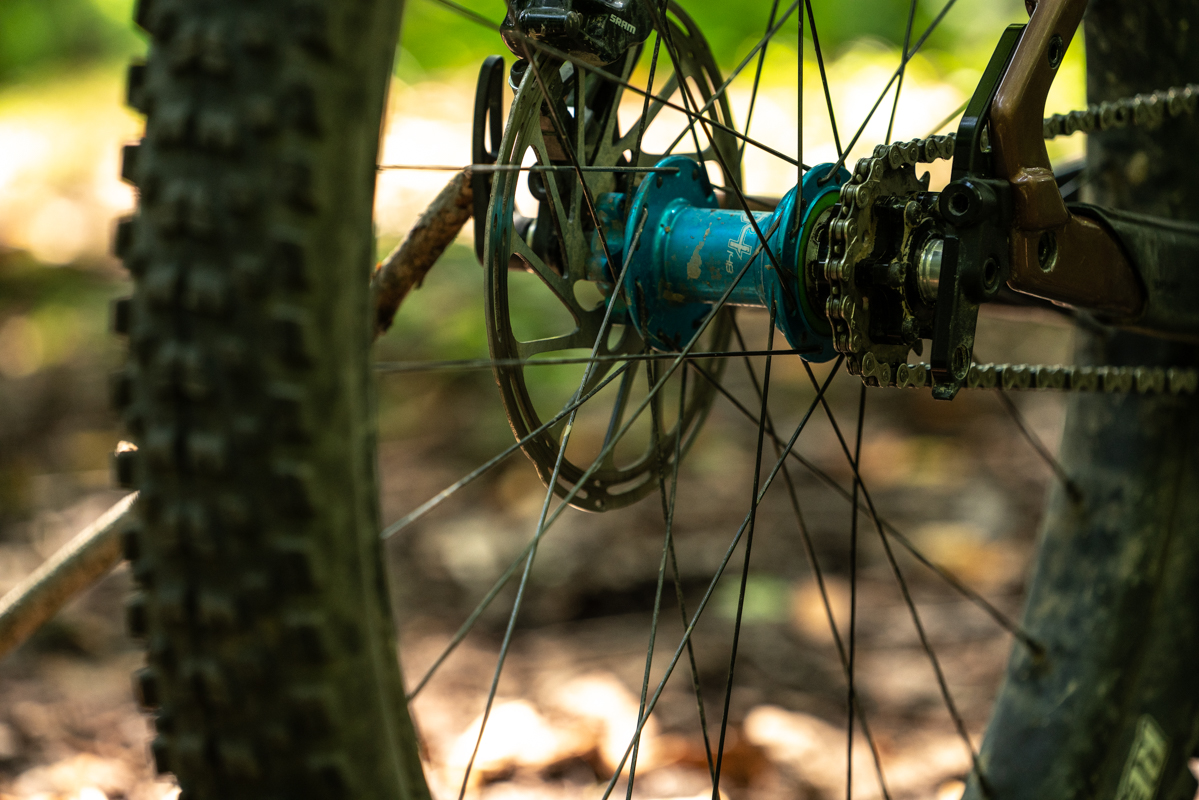
Geometry is not identical to its alloy counterpart, but only a few millimeters here and few millimeters there separate the two.
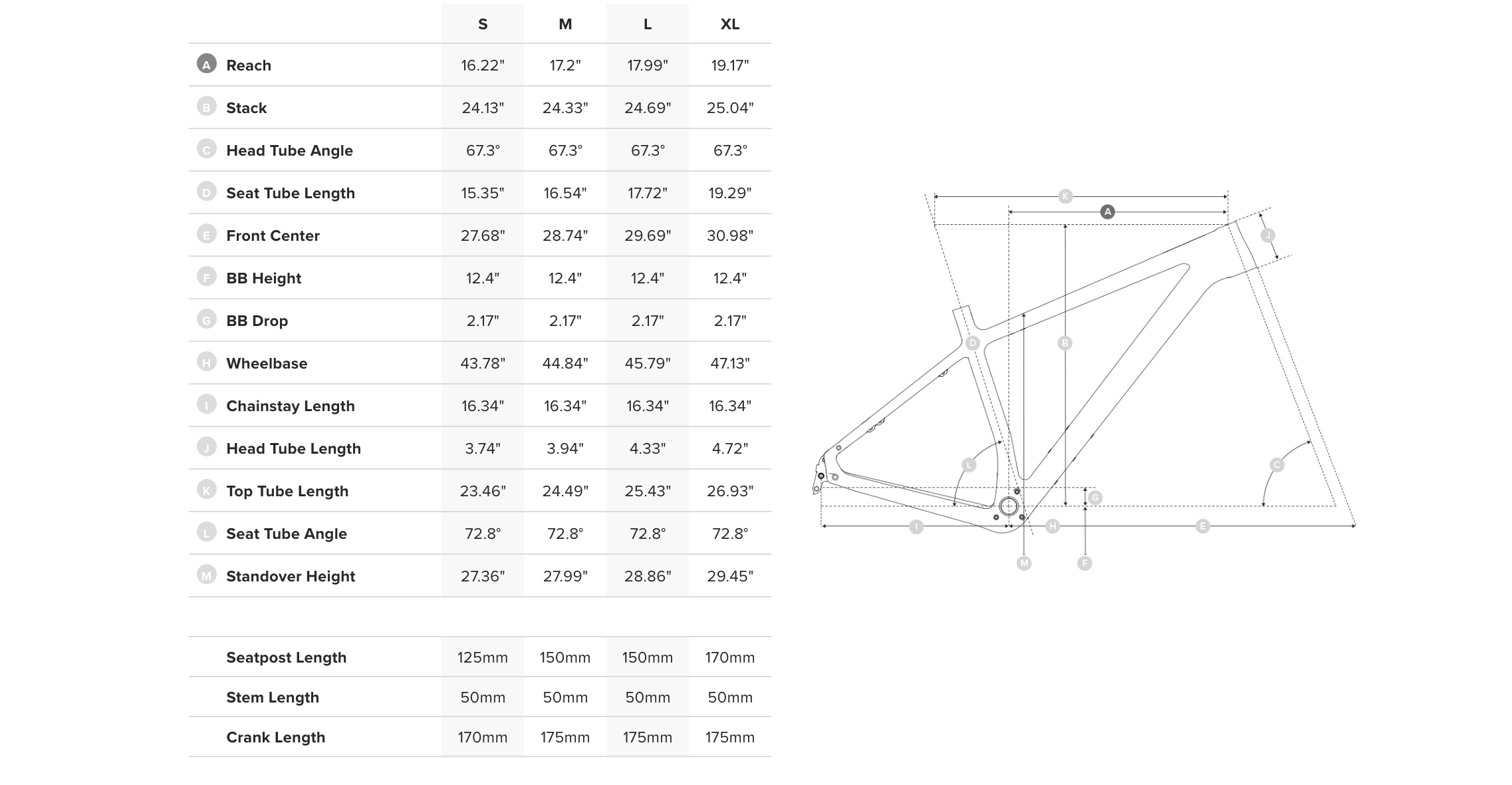

The 29er models offer 120 mm of front squish while the 27plus models bump up to 130 mm to keep the geometry consistent. To further maintain ideal geometry when switching between wheel sizes, Santa Cruz went with wheel-size specific dropouts which are available separately at $80 per set.

As Josh Kissner, Santa Cruz product manager, explains “The 27plus dropouts move the axle-mounting holes lower, accounting for the smaller diameter of the 27plus wheels compared to a 29×2.3.”Josh also went on to say that the team tries to make the bottom bracket height as low as possible without pedal-strike issues, and interchangeable dropouts are the best way to keep everything fine-tuned.
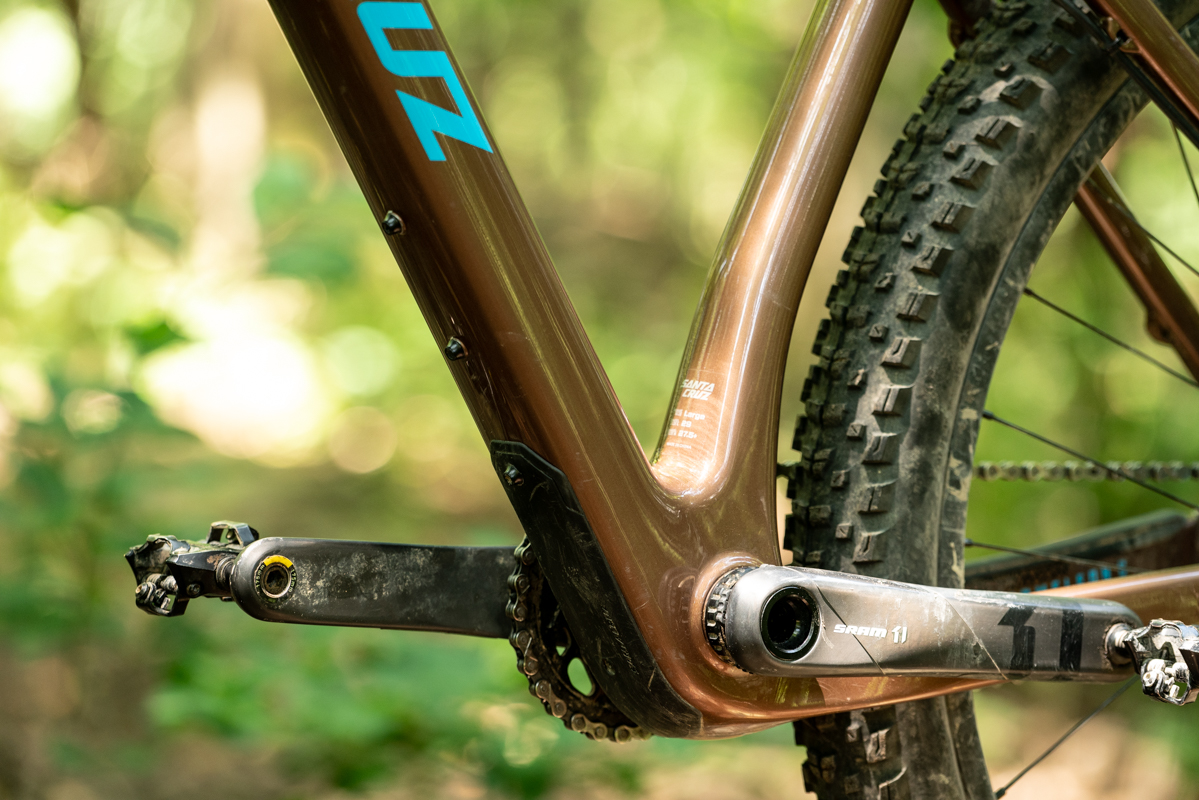
Due to the adjustable tensioner system, all dropouts are singlespeed capable. However, Santa Cruz offers a singlespeed specific dropout with non-boost 142 mm spacing that pairs well with a singlespeed specific hub.
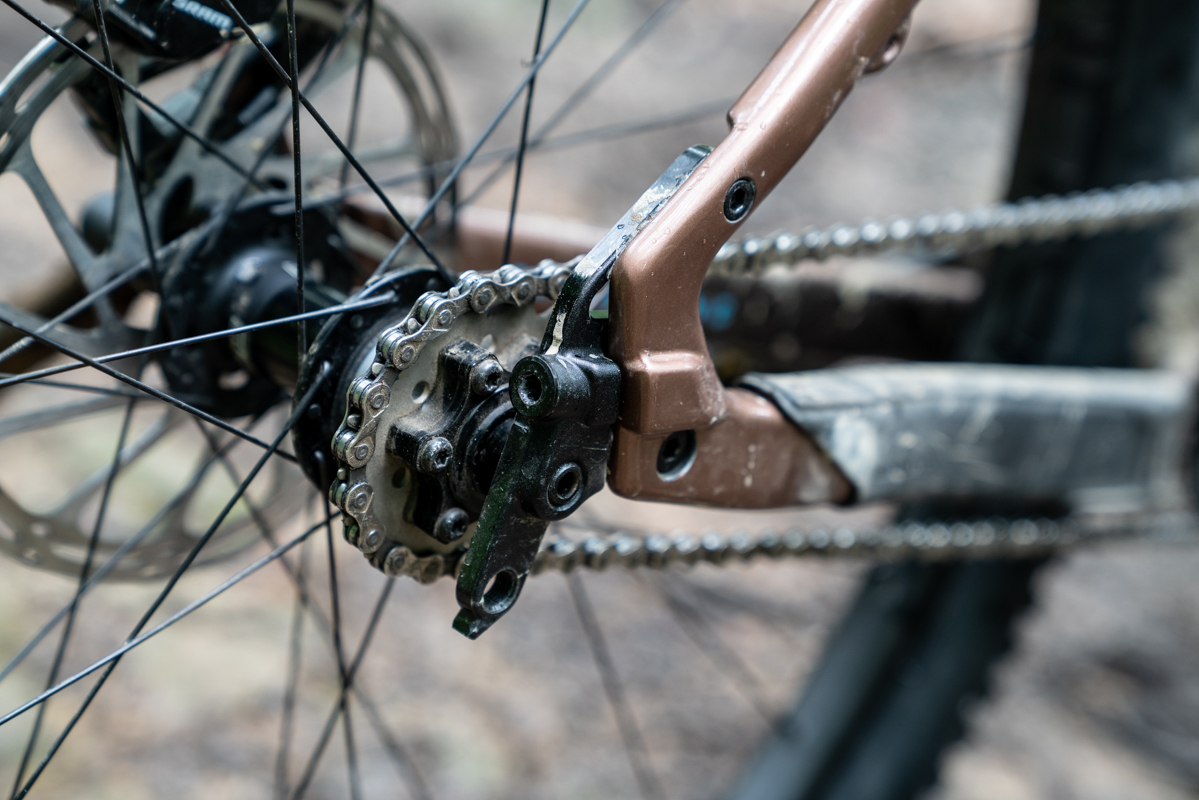
Other bits include one set of bottle cage mounts inside the triangle and a three-pack mount on the underside of the downtube. If you’re not familiar, the three-pack mounts allow the use of cargo cages for larger items like water bottles and are widely utilized by the bikepacking crowd. They also double as mounts for a regular two-bolt water cage.
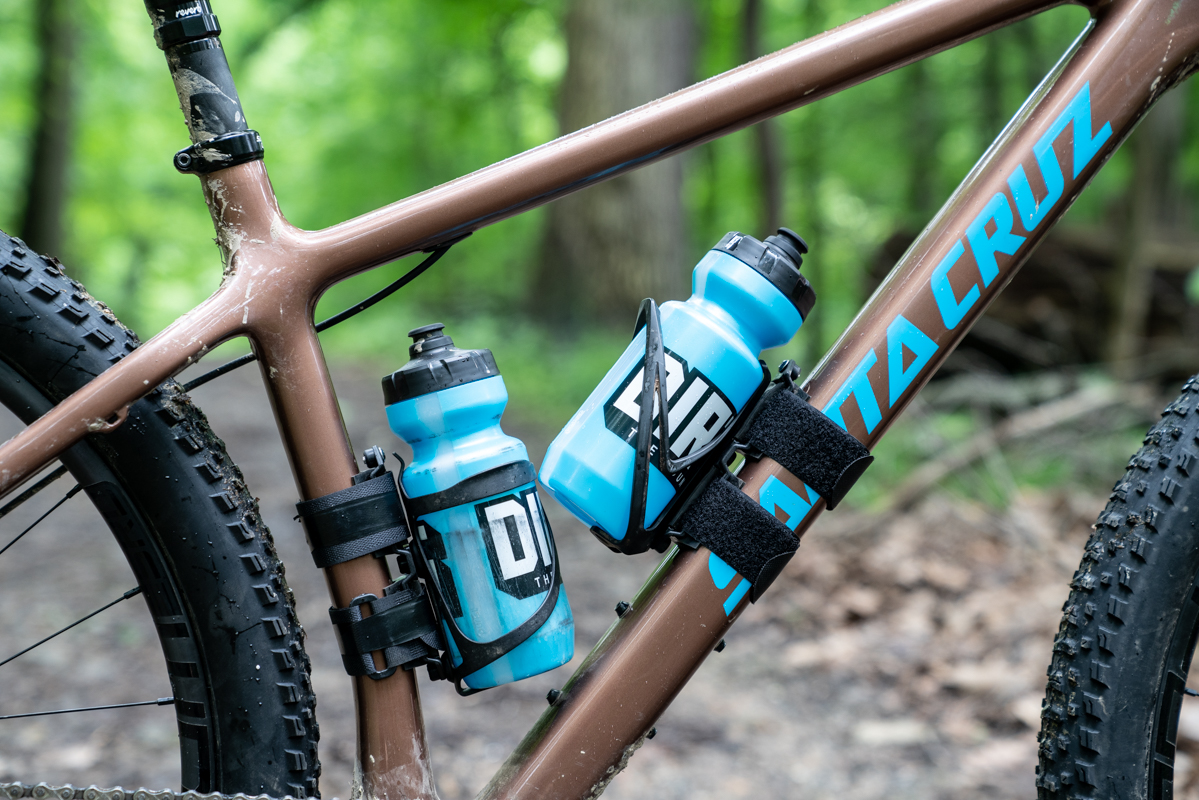
THE RIDE
The new do-it-all Chameleon in carbon form was beyond a surprise, and as I first caught wind of the news, I immediately shot our friends over at Santa Cruz an email to get on the list. However, once our carbon Chameleon arrived and I was able to get the first few rides on the bike, it didn’t exactly bring out the perma-grin experience that the company’s full-suspension bikes have done in the past.
The geometry is dialed, and the bike rips through singletrack like a brawler, but I felt like I was getting too much trail feedback. I experimented with various setups, changing wheels, tires, bars and even swapping forks, but the carbon Chameleon left me feeling like I had spent the afternoon rock climbing after a two-hour ride on singletrack. The bike is clearly built to last and be ridden much harder than I am willing to ride it.
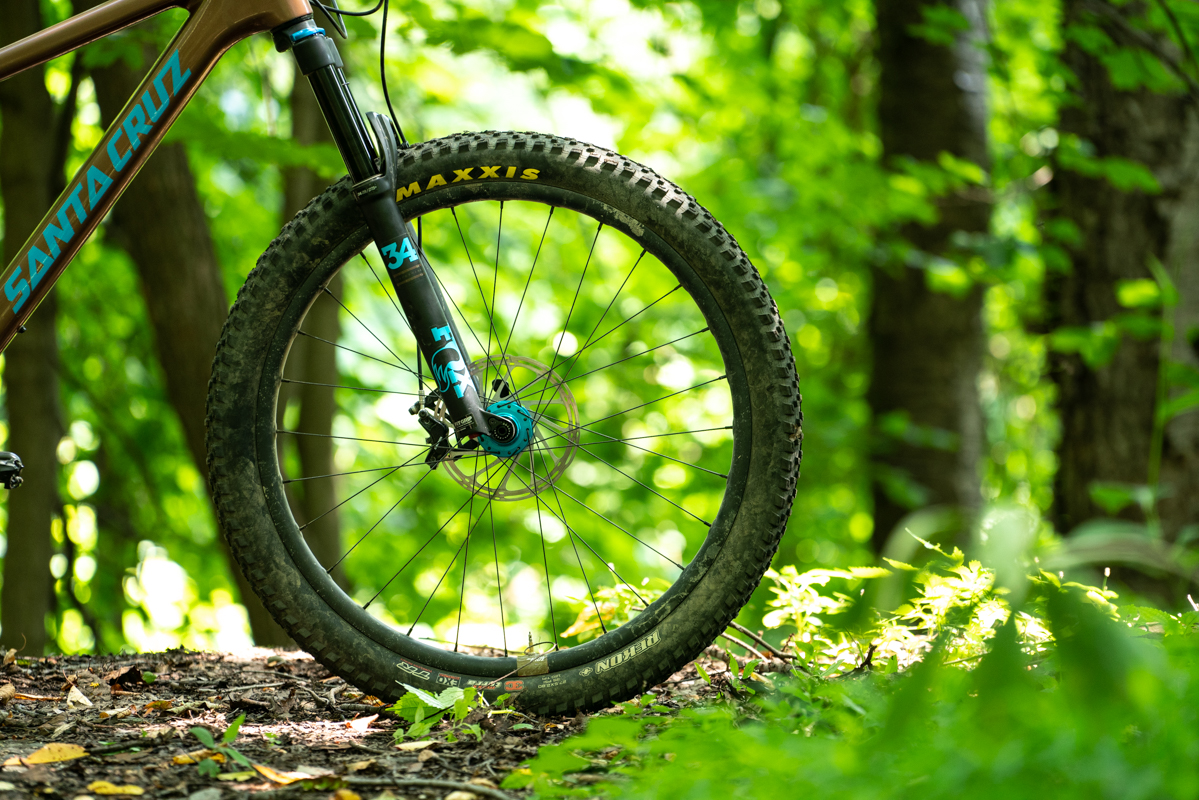
I opted for the 27plus model for our review because I wanted a 130 mm fork that allowed me to test all wheel configurations. Stiffness aside, the 27.5×2.8 wheelset was a blast on fast and flowy singletrack. The added meat to the tires may have added a bit too much confidence as I found myself pushing the limits on how hard I could lean through corners on the loose over the hard-packed surface. I also never once experienced a pedal strike issue, even in rock laden areas with a lot of slow technical maneuvers.
The tensioner system works flawlessly, and I particularly appreciated how all bolts were the same head size. Loosen two M5 bolts on each side of the stay and adjust the M5 tension bolt fore/aft to get your desired tension or chainstay length, tighten the four bolts and voila. While Pivot’s sliding dropout system with indexing bolts is the cleanest executed system I’ve used, the Santa Cruz tension system has zero qualms from my end.

One of the carbon Chameleon shortcomings in terms of a dedicated singlespeed steed is the girthy dropped drive-side chainstay. The bike has a max chainring size of 34T and depending on the gearing you want to run, the chain has the potential to rub the underside of the chainstay. With the 27plus dropouts, stock 30T chainring and an 18T cog, the chain was grazing the chainstay protector. You could probably take off the rubber protector and replace it with some protector tape, but still seems a little too risky in my book. I later opted for a 34T boost spaced chainring, and an 18T cog for a gravel ride and the clearance looked much better. If you are looking to run the Chameleon as a dedicated singlespeed, I’d suggest opting for the 34T chainring from the get-go, a 34×21 or 34×20 setup should do the trick just fine. It could be a bit of a head scratcher for those that run lighter gear ratios, but using the 27plus dropouts and experimenting a little, you should be able to find a gear ratio that suits your needs.

Kissner mentioned that the carbon chainstay takes up a bit more space to get the proper stiffness when compared to the aluminum model, which offers a solid piece of aluminum on the driveside chainstay yoke. He went on to say that the limitation is not ideal but “it’s the price for having 27plus compatibility, short chainstays and singlespeed compatibility in one bike”.
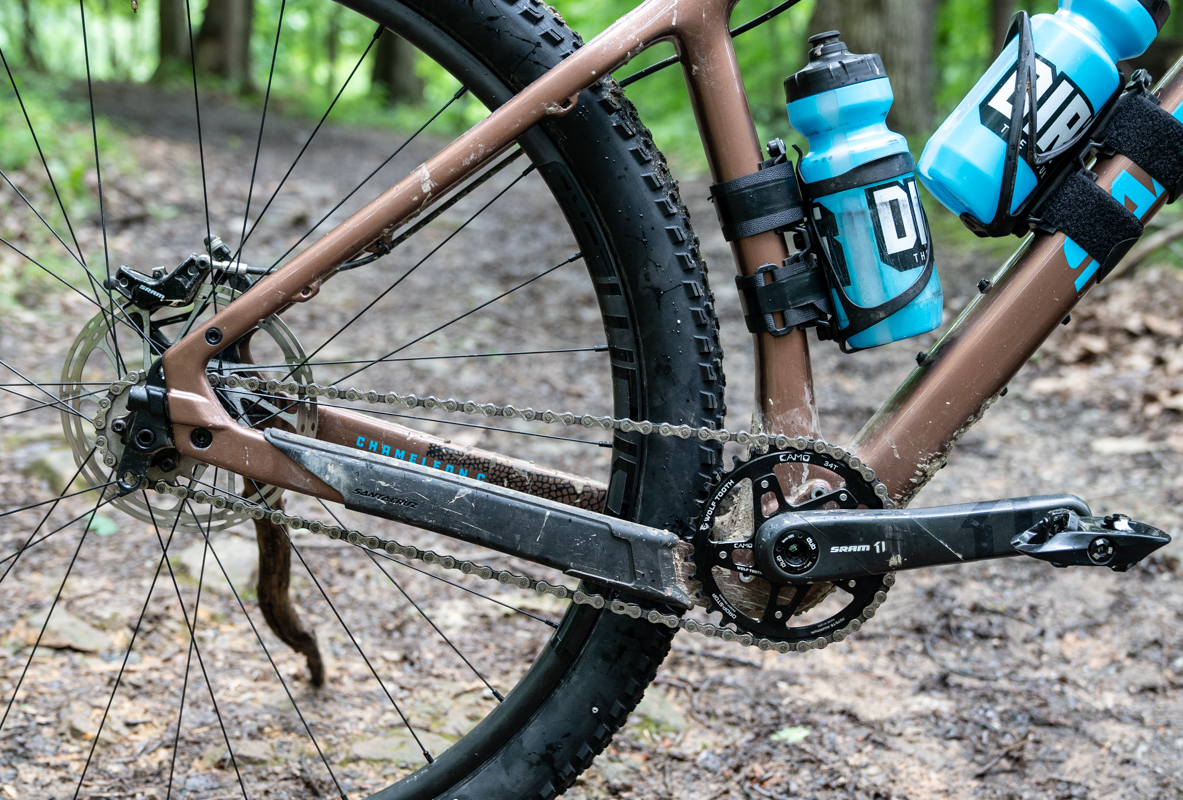
FINAL THOUGHTS
All in all, the Chameleon checks a lot of boxes as a versatile rig, but the one essential item that bums me out is the absence of a second bottle mount on the seat tube. As I’ve said in the past, solutions exist, but for a hardtail, two cages inside the triangle are a must-have. I was able to remedy this with a set of TwoFish Quick Cage Adapters that securely velcro a cage mount to the frame, which provided zero issues during a 75-mile ride.

The Santa Cruz Chameleon C is a perfect example of how hardtails can be just as capable as their 130 mm full-suspension counterparts on the trail or be the perfect bikepacking bike to get off the beaten path. The versatility from one end to the other is unmatched, and the Santa Cruz Chameleon continues to prove itself as a do-it-all machine.
Tester: Scott Williams
Age: 33
Weight: 165 lbs.
Height: 5′ 11″
Inseam: 32.5″
Sizes: S, M, L (tested), XL
Weight w/o pedals: 26 lbs.
Online: santacruzbicyles.com